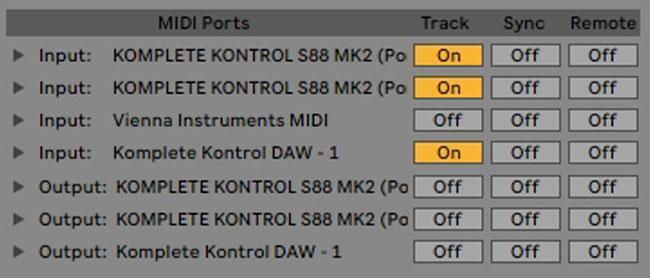Please connect the MD06 to your PC's USB2.0 Port. and Set the MD06 to Mode THRU2. Of course there are settings to your DAW and other MIDI devices' Clock.Here are the hints. Please consult your MIDI device's manual if you are not sure of the settings.
Mode THRU 2 【Video Reference on Youtube】
Output LEDs are lighted when MIDI input data is received.
In this mode, input 1 is connected to the 4 outputs.
Input LED 1 and all 4 outputs LEDs are lighted.
After 2 or 3 seconds, the output LEDs are turned off (input led remains on).

The Basic Steps For Syncing a Device to a DAW via MIDI clock:
1. Connect your MIDI Device via MIDI Cable or USB. If you use USB, make sure your device can send/receive MIDI data over USB, a.k.a. MIDI over USB.
2. Be aware that you may need to install a USB driver from the manufacturer’s website to allow your DAW to recognize your MIDI instrument.
3. Find your DAW’s MIDI setting in the preferences or settings menu.
4. Set the DAW’s output settings to send the clock to your MIDI instrument. In Ableton, for example, you do this by finding the output port for your instrument in the MIDI Ports list and switching Sync to On.
5. SET your MIDI device to receive MIDI clock. Be sure to check your device’s manual or tutorial videos for specific instructions on how to navigate the clock settings.

1. Many MIDI devices and DAWs have some type of indicator that shows clock is being sent and/or received. On the Nord Electro 6D 61, for example, there is an LED indicator simply called MIDI.
2. Now when you start playback in your DAW, your device should start simultaneously and be synced to your DAW’s clock.
You can also sync your DAW to another device. In this case, your device sends the clock and your DAW receives that clock. For instance, if you have a MIDI controller with master clock/tempo, every change you make to your keyboard’s clock setting will also change in your DAW. In this case, the setup is similar to the previous step-by-step process, but the clock is sent the opposite way.
It is also worth noting that many devices and DAWs can both send and receive MIDI simultaneously. For example, this could be useful if you wanted to receive MIDI clock from your DAW to your digital piano while sending MIDI back to your DAW to record your performance. In other words, the DAW is sending clock and receiving MIDI note data, while the keyboard is receiving clock and sending MIDI note data.
What Is MIDI Clock?
MIDI clock, or MIDI beat clock, is a signal that is sent over MIDI that allows the user to sync several devices together so they stay in synchronization. In simpler terms, it’s a way to set two or more MIDI devices to one tempo. This can be done with devices like MIDI controllers, drum machines, synthesizers, software/apps, or sequencers (a.k.a. DAWs). MIDI clock runs at a rate of 24 ppqn (pulses per quarter note). This means that the actual speed of the MIDI clock varies with the tempo of the clock generator (as contrasted with SMPTE time code, which runs at a constant rate).
Syncing a device to a DAW via clock is achieved basically the same way, across the board, but various combinations of DAWs and devices will inevitably have slight differences in procedure. In the following step-by-step process, the goal is to get a DAW to send clock via its MIDI output and for a MIDI device to receive that clock. For example, a synthesizer with an arpeggiator would have its arpeggiator rate or tempo synced with the DAW project tempo.